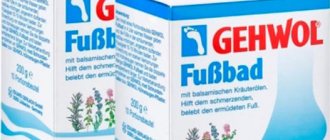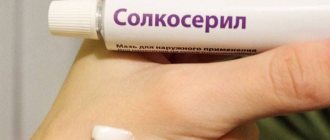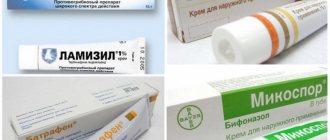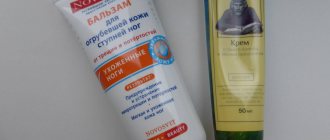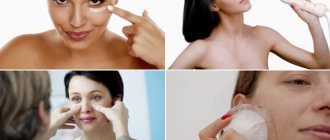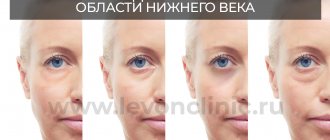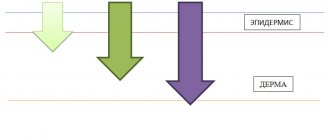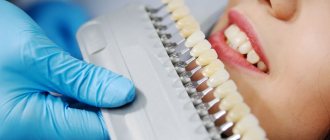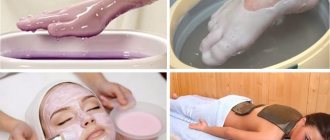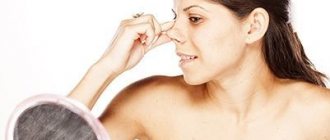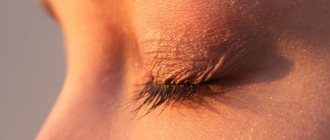Cracks on the feet are a partial violation of the integrity of the skin on the plantar part of the foot. They form more often on the heels; women are more susceptible to their occurrence. Deep cracks are unpleasant because they cause pain, take a long time to heal, and make walking and physical activity difficult. Like other injuries, they facilitate the penetration of pathogenic bacteria and fungi into the skin and are fraught with an infectious inflammatory process. Why do they arise?
Improper care
The skin on children's legs is extremely sensitive to negative influences. Dryness and flaking are often provoked by simply washing your feet with running water. For example, when the water is hard or contains a lot of chlorine. Therefore, after bathing procedures, be sure to apply a moisturizing, nourishing cream or baby oil to your feet. If possible, buy a special filter nozzle for the shower that will retain chlorine and mechanical impurities. This will prevent irritation and protect the baby’s skin from drying out. Prolonged bathing in hot water is also bad.
If the skin of a child's feet is peeling, the reason may be tight, artificial shoes, synthetic tights, or socks. When in contact with such materials, the skin “does not breathe” and sweats, which leads to peeling. The area between the toes is most affected.
Dry air has a negative effect on delicate baby skin. Many mothers notice that it is in winter, when there are hot radiators in the apartment, that the child’s palms and feet become very flaky.
You can solve the problem if:
- use moisturizer daily;
- regularly ventilate the apartment or house;
- maintain humidity within 40 - 60% using a humidifier or improvised means (wet towels, radiator sheets).
For intensive hydration and restoration of children's skin, ointments with provitamin B5 - Bepanten, Dexpanthenol - help.
Cracked heels: cosmetic defect or serious problem?
Many people, especially women, complain that cracked heels interfere with an active life, wearing nice shoes, and sometimes even the slightest heel crack can cause severe pain. This is not only a cosmetic defect, but a prerequisite for the development of serious pathology in the body. Therefore, it is very important to take timely measures and contact a specialist. In this article we talk about why cracked heels can form, what their danger is, where to start treatment, and what measures are most effective in combating cracked skin on the feet.
Why do problems with rough skin on the feet and cracked heels occur?
The skin of the plantar surface of the feet is thick, hairless and rich in sweat glands. Also, healthy skin on the heels should be elastic. A distinctive feature is that this area has the thickest surface layer of skin. In places that serve to support bones (for example, in the heel area), there is well-defined subcutaneous fatty tissue that protects the bone from external pressure.
Being subjected to constant stress, which increases significantly with foot deformities, wearing uncomfortable shoes, during active sports, i.e. in response to a mechanical effect on the skin of the feet, a response occurs in the form of increased cell division in the surface layer of the skin. Ultimately, this leads to the development of hyperkeratosis - thickening of the superficial stratum corneum. The skin of the feet becomes harder, less elastic, and its sensitivity to external influences decreases. Thus, the properties of the skin change.
What can cause cracked heels?
Frequent causes of cracked heels are fungal infections of the skin of the feet, allergic diseases, eczema, psoriasis, and various types of keratoderma. This may also be a consequence of mechanical influences: wearing tight or uncomfortable shoes, walking for a long time. If a person spends all day on his feet, they swell, blood circulation is impaired and, as a result, the condition of the skin of the soles and heel area suffers. A lack of vitamins or an excess of them can also negatively affect the appearance of the heels. Cracks in the heels can appear due to impaired metabolism, diseases of the endocrine and cardiovascular systems.
Are these troubles really that serious?
The appearance of cracks is accompanied by severe pain, which reduces the ability to work and limits the possibility of active sports. Cracks are dangerous, first of all, because they are “gates” for the penetration of pathogenic microorganisms, which can cause inflammation and lead to many undesirable consequences.
What is the correct, and most importantly, effective treatment?
Before starting treatment for cracked heels, it is necessary to find out their cause, consult with a dermatologist, and carry out the necessary laboratory tests. Treatment must be specialized, since in the presence of skin diseases, even the most thorough heel care will not give noticeable results. For example, foot fungus is treated with special antifungal drugs, which only a specialist can help you choose. If the cracks were caused by improper care or wearing bad shoes, you should try to change the conditions that contributed to the disease.
What can you recommend for caring for your feet at home?
All home treatments are effective in cases where dry skin on the heels is not associated with any disease. At home, baths of soap and soda help soften and cleanse the skin best: for two liters of hot water you need to take a tablespoon of soda and a tablespoon of soap. The duration of the procedure is 15 minutes. Immerse your feet in the bath and massage your heels a little, without making much effort.
To combat rough skin on the feet, ointments containing 15-20% urea and 5% salicylic acid are used. They moisturize the skin and soften it. To heal cracks, you can use drugs with methyluracil, vitamin B5, and antimicrobial action. To prevent cracked heels, you should also moisturize the skin with warm olive oil, massage, and use a rich cream or ointment with Vaseline.
It should be remembered that these simple tips will only help in properly caring for the skin of your heels. However, only a qualified dermatologist can determine the true causes of skin changes.
You can get full advice on the diagnosis, treatment and prevention of cracked heels from dermatologists at the Vita Medical Center. Our specialist will study each individual case and offer the most effective preventive and treatment measures.
Allergy
Peeling of the skin on a child’s feet is possible due to allergic reactions, atopic or contact dermatitis.
Irritation is caused by:
- washing powder that you use to wash children's socks or tights;
- baby creams, care oils;
- clothing made from synthetic fabrics;
- highly allergenic foods (citrus fruits, milk, chocolate, eggs, fish);
- insect bites;
- medicines, sweet syrups containing chemical flavors, dyes, flavoring additives.
Allergic reactions are often accompanied by severe itching. Parents should ensure that the child does not scratch the skin, otherwise an infection will occur. Antihistamines help cope with itching, redness, and inflammation. For effective treatment, it is important to identify and eliminate the allergen.
Dry and rough heels: what else can be done at home
What else can you do to soften dry heels? In addition to basic care rituals, you can also use auxiliary beauty procedures that will help make the skin of your heels smooth and soft.
- Foot baths
: a time-tested remedy for softening and soothing dry and rough skin on the feet. Important: It is not recommended to keep your feet in water for more than 10 minutes - remember that water can dry out the skin. Before you take a herbal bath for the first time, make sure that you do not have allergic reactions to them. - Masks and compresses
: nourishing masks and compresses based on cosmetic oils are usually made after steaming and exfoliating dry skin. They help saturate the skin with useful substances, additionally nourish and soften it. - Skin polishing
: if you are used to using a pumice stone or a file to thoroughly exfoliate the stratum corneum on your heels, try to choose “soft” formats of these products. Use them no more than once a week and do not use them if you have open wounds or cracks on your skin.
Fungal infection
If your child likes to try on other people's shoes, walks barefoot in public places or goes to the pool, there is a risk that he has contracted a fungus.
In addition to peeling, this infection is characterized by the following changes in the affected area:
- itching;
- redness, inflammation;
- unpleasant odor;
- thickening of the skin;
- formation of microcracks.
It often happens that peeling is the only symptom. Parents may not suspect that it is a fungus. The skin between the toes usually suffers first, and then, if left untreated, the infection progresses.
To combat the fungus, antifungal agents are used, which are recommended by a dermatologist, mycologist or podologist. The sooner treatment is started, the easier and faster it is to get rid of the infection.
Traditional medicine recipes for flaky foot skin
In the refrigerator and at hand we have a lot of useful products that will help in the fight against dry skin on the feet. You can make all kinds of masks, compresses, and baths from them. Cosmetologists recommend using these recipes to combat peeling.
- A compress of honey and flour helps very well with peeling. You need to take two tablespoons of honey and three tablespoons of flour. Mix the ingredients until smooth. Make two small cakes from the resulting slurry. Feet should be steamed first. Place honey cakes on the steamed heels, wrap your feet in plastic and put on socks. The effect of the compress is amazing. Within a week, the skin will become soft and tender.
- Yolk ointment has a good softening, nourishing and healing effect. You need to take one yolk, mix it with a teaspoon of vinegar and a tablespoon of vegetable oil. Apply the resulting mixture to your steamed legs. The heels will delight you with softness and tenderness.
- Author: Author: Alena
Rate this article:
- 5
- 4
- 3
- 2
- 1
(16 votes, average: 3.7 out of 5)
Share with your friends!
Lack of vitamins
A deficiency of vitamins A, E and D leads to flaky feet in a child. Children under 5 years of age experience this more often than older children.
To tidy up your skin, adjust your baby's nutrition. Add freshly squeezed carrot, apple juice, nuts, vegetable oils, dairy products. If the skin on the feet and legs of an infant is peeling, the nursing mother should reconsider her diet. For bottle-fed babies, the pediatrician decides in what form it is best to add the missing vitamins. Vitamin complexes from a pharmacy are safe to give only as prescribed by a doctor.
If you have hypovitaminosis, you can try applying vitamins topically, directly to problem areas. To do this, take Aevit capsules, add their contents to a small amount of baby cream, and lubricate your feet after bathing. From pharmaceutical products, dermatologists prescribe Radevit ointment, which contains vitamins A, D, E.
Basic rules for caring for dry and rough heels
Sometimes it seems that even very dry heels do not require any special care - just regular peelings and pedicures are enough. Of course, this is not entirely true. Like any area of our body, heels need care rituals.
Cleansing
Of course, you don’t need to look for any special product for washing your heels - just choose a body cleansing gel that also has intense moisturizing properties. A good example would be CeraVe Moisturizing Cleansing Cream-Gel, which is suitable for normal to dry body skin.
Moisturizing cleansing cream-gel
For normal to dry skin of the face and body
Effectively cleanses and moisturizes the skin, helping to restore its protective barrier.
More details
CeraVe cream-gel effectively cleanses the skin and contains hyaluronic acid and glycerin, which promote intense hydration. The ceramides included in the composition are also responsible for restoring and strengthening the skin's protective barrier, helping to resist negative environmental factors.
Hydration and restoration
The second basic stage of care should be the use of a moisturizing and renewing product - such as CeraVe Restoring Foot Cream. It is designed for dry and rough skin on the feet and contains ceramides, salicylic acid and niacinamide.
Revitalizing foot cream
For dry skin
Effectively exfoliates and moisturizes chapped foot skin without irritating it.
88 ml
More details
Thanks to this composition, CeraVe Regenerating Foot Cream softens and moisturizes dry skin on the heels, restoring it. Ceramides help maintain and strengthen the skin's protective properties, while salicylic acid gently exfoliates dead skin cells and promotes rapid skin renewal.
Exfoliation
As we have already said, peeling the skin in the heel area should be quite gentle and delicate. Do not get too carried away with the use of pumice stones, active scrubs or mechanical methods of skin removal, including trimming pedicures.
Instead, it is better to use softening baths, scrubs with small abrasive particles 1-2 times a week, or, as necessary, do an unedged (hardware) pedicure in a specialist’s office. These are more gentle/gentle ways to soften and exfoliate rough, dry or rough heel skin.
Intestinal disorders
The cause of peeling skin on a child's feet is often associated with dysbacteriosis and helminthic infestation. Dysbacteriosis makes it difficult to digest food, and the absorption of vitamins and other substances beneficial to the skin deteriorates. Violation of the intestinal microflora often occurs in infants whose digestive system is not yet fully developed, and in children who have taken antibacterial agents. Probiotics and prebiotics help restore the balance of beneficial and harmful bacteria.
If your feet have been peeling for a long time, it won’t hurt to get tested for helminths. Damage to the body by these parasites negatively affects the condition of the skin, provokes dysbacteriosis, allergies, decreased immunity, and other disorders.
Skin diseases
Skin problems on the legs can be the result of dermatological diseases or infections.
These include:
- Eczema. A hereditary chronic disease, the development of which is provoked by allergies, reduced immunity, stress, and infections. With eczema on the feet, the skin becomes very dry, itchy, red, and covered in a rash;
- Psoriasis. Chronic non-contagious disease with genetic predisposition. The impetus for the appearance of symptoms can be a change of season, rubbing the skin with clothing, infections, or certain medications. Psoriasis causes scaly, inflamed red patches;
- Lichen. An infectious disease caused by various fungal or viral pathogens. There are 5 types of lichen. Ringworm (microsporia) is usually found in children. Children of preschool age and primary schoolchildren who come into contact with street cats or dogs get sick more often. This type of lichen appears as pink spots with a flaky center.
Cases of cracked heels on feet from practice
Crack on the foot heel example 1
Cracked heel example 2
Heel crack example 3
Crack on the foot example 4
Cracked heels example 5
What to do?
Have you noticed that your child's feet are flaky? Don't rush to the moms' forum for advice. If the condition does not improve after using moisturizing baby cream, consult a doctor. Parents' independent conclusions about the cause of skin changes are often erroneous. And lost time and improper treatment only worsen the situation, leading to cracks and infection. Therefore, be sure to consult a dermatologist.
To prevent peeling, make sure your child has:
- complete balanced nutrition;
- moisturizing foot cream with natural composition;
- strong immunity;
- proper foot hygiene;
- comfortable, natural shoes.
To monitor the condition and prevent foot diseases, we recommend that you and your child undergo periodic examinations by a podiatrist and undergo medical pedicures.
0 0
